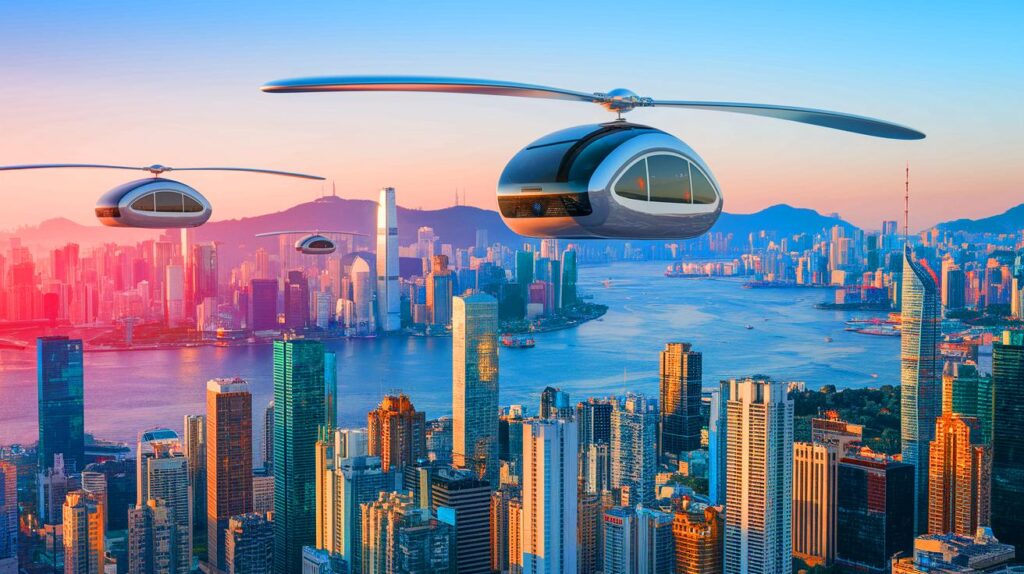| In Brief |
|
As technology rapidly evolves, the field of autonomous air transport is booming. Recently, EHang took a decisive step by obtaining all necessary certifications for the commercial development of its autonomous aerial vehicles. This advancement signifies the start of a new era in urban transport, promising faster and more eco-friendly journeys. However, while some countries struggle to implement this type of transport, others, like China, seem ready to embrace them in their skies.
The Missed Opportunity of the Paris 2024 Olympic Games
The Paris 2024 Olympic Games were anticipated as a technological showcase where flying taxis could demonstrate their potential. Nevertheless, the Parisian skies remained void of these futuristic vehicles. ADP Group and Volocopter, who were collaborating to introduce these flying taxis, encountered a major hurdle: the lack of timely engine certification for the event. This absence has been felt as a notable failure, as these vehicles could have revolutionized urban transport by providing an effective and eco-friendly solution to decongest the streets of the French capital.
Despite this setback, the concept of flying taxis in Paris has sparked immense curiosity and highlighted the regulatory and technological challenges facing companies innovating in this sector. The capability of vertical takeoff and landing could have transformed urban mobility, but regulatory obstacles have delayed this dream of accessible urban air transport for all.
Flying Taxis Take Flight in China
In contrast to Paris, China seems ready to make significant strides with the introduction of flying taxis in its cities. Guangzhou and Hefei will be the first cities to experiment with this new mode of transport, thanks to the approvals obtained by EHang. This Chinese company has received the green light from civil aviation authorities to operate its flying vehicles commercially. The aircraft, completely autonomous and electric, can carry two passengers and promise to revolutionize urban mobility in China.
The deployment of these flying taxis marks a significant milestone in the development of passenger air transport in China. This advancement could stimulate further innovations in the transport sector, providing a viable and eco-friendly alternative to traditional transport modes. With a capacity for two passengers, these autonomous vehicles could quickly become a popular solution in congested cities.
Future Expansion of Flying Taxi Services
EHang’s vision does not stop at a few Chinese cities. The company plans to expand its operations to other regions in China, aiming to establish a low-altitude air transport network. As the first company worldwide to secure the necessary certifications for this type of flight, EHang holds a unique position to dominate the emerging flying taxi market.
The first commercial flights are expected in June 2025, with a preliminary phase aimed at tourists. These vehicles, equipped with 16 propellers, offer a range of 30 kilometers and can reach a maximum speed of 130 km/h. EHang is thus positioning itself as a pioneer in the sector of autonomous aerial vehicles (AAV), propelling China to the forefront of this revolutionary technology.
Comparison Table of EH216-S Specifications
| Features | Details |
|---|---|
| Capacity | 2 passengers |
| Range | 30 kilometers |
| Maximum Speed | 130 km/h |
| Propulsion System | 16 propellers |
| Type of Powertrain | 100% electric |
As China advances towards the future of flying taxis, numerous technological and regulatory challenges remain. Cities around the world will watch this Chinese experiment with great interest, which could redefine our concepts of urban mobility. The pressing question now is: how will these innovations influence urban infrastructure and the daily lives of residents in the coming years?







